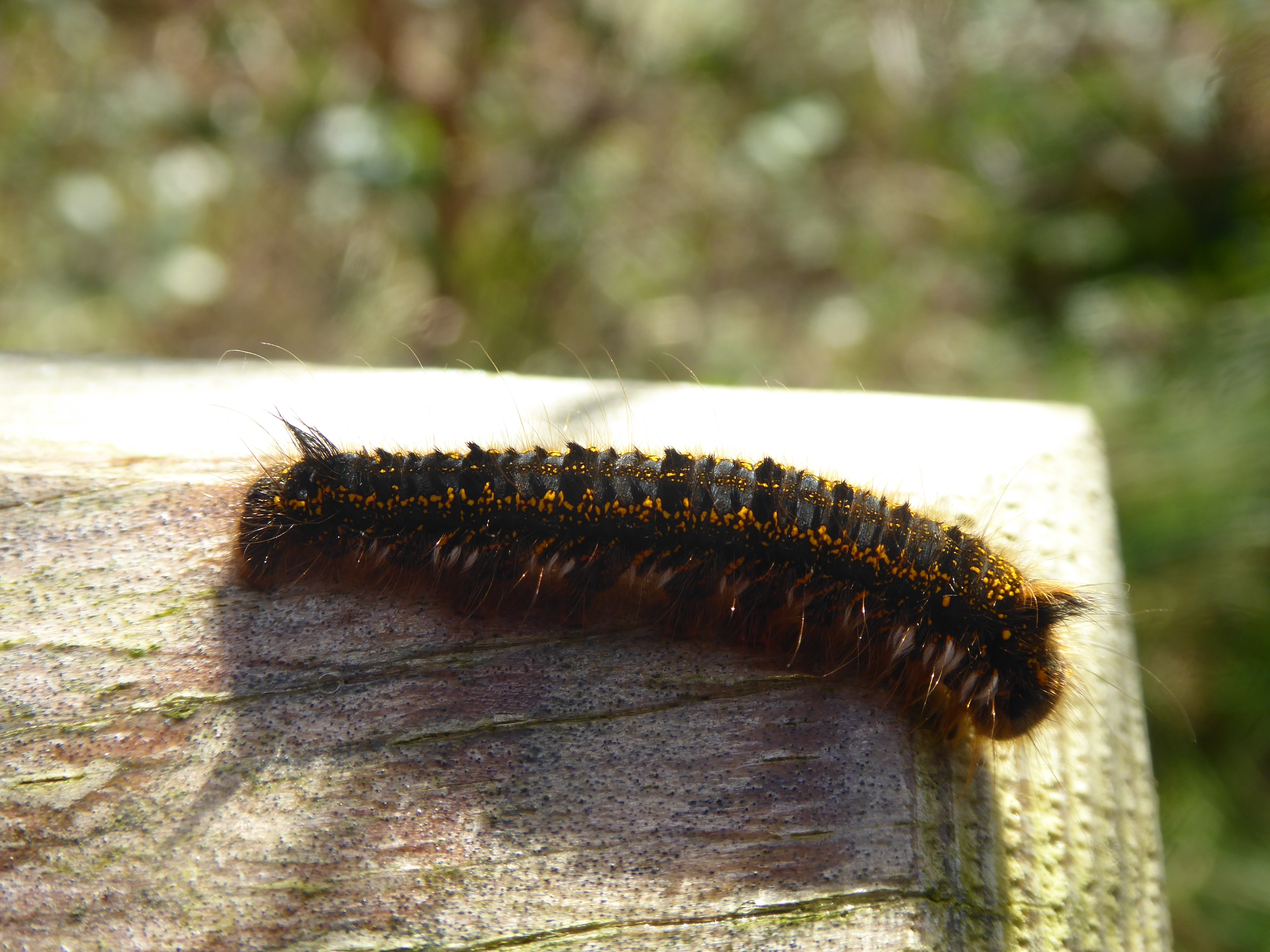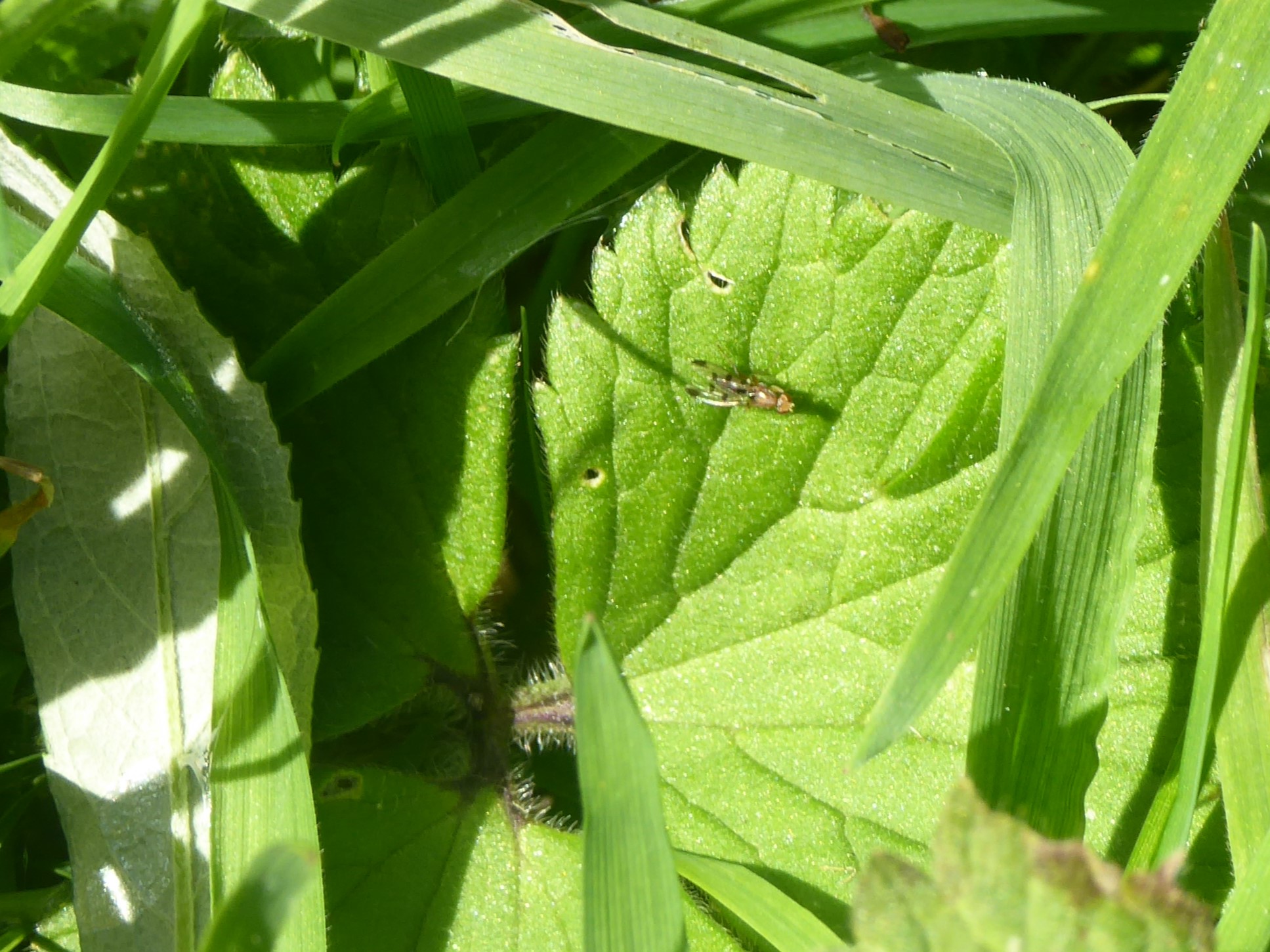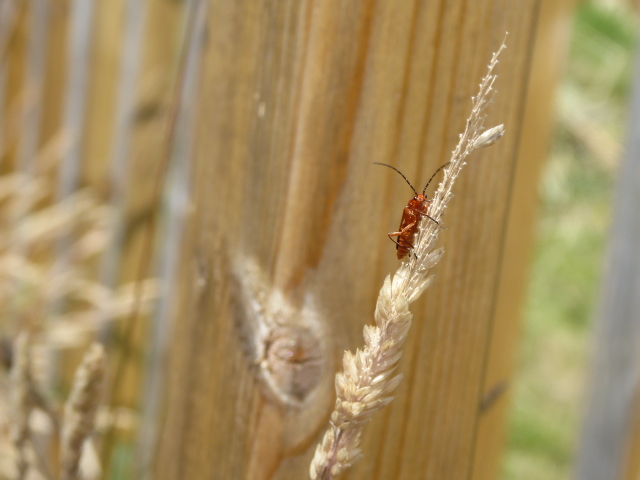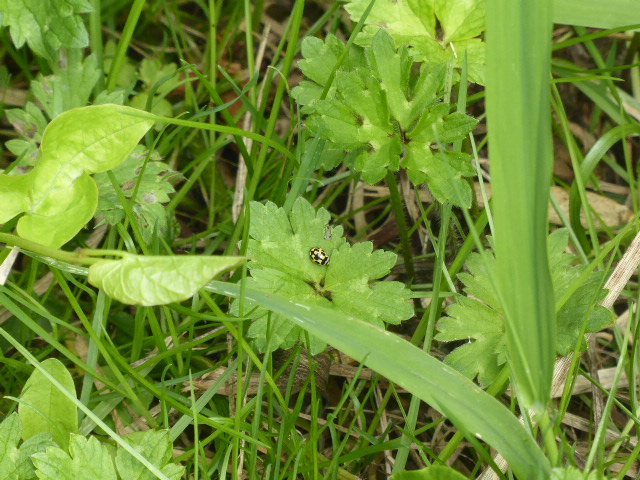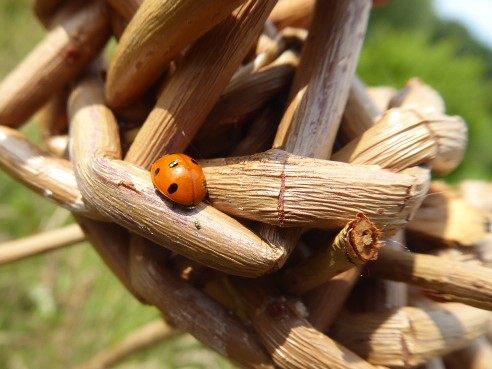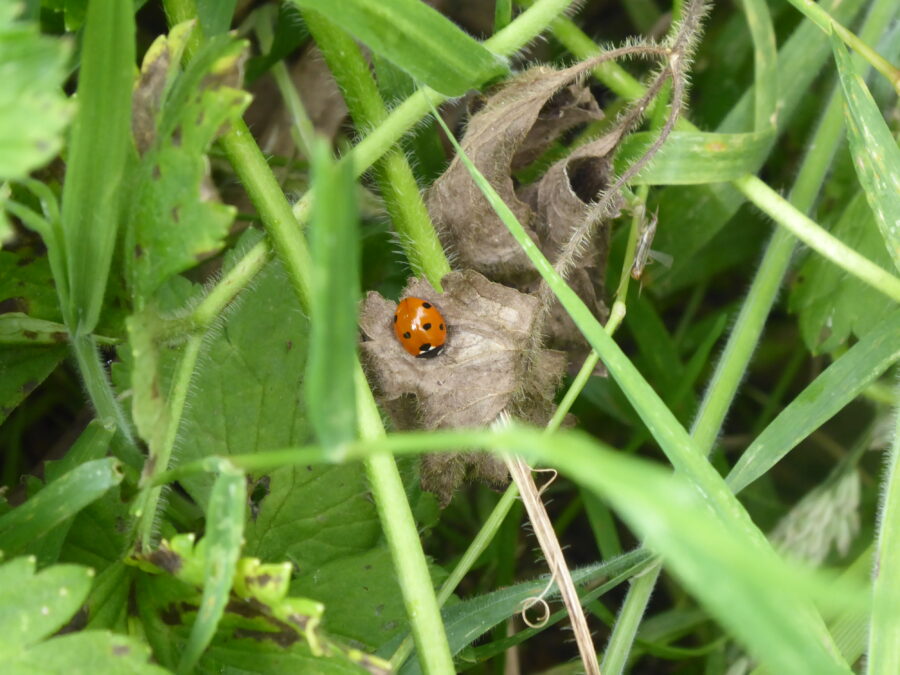The other day, I went out to try and get some pictures and to have a look at the flooding in the watermeadow. It was sunny and I was surprised at the number of bugs on the ramp at this time of year. I saw a seven-spotted ladybird, a bronze beetle, a drinker moth caterpillar, lots of flies and small wolf spiders. Not bad for November! I even saw a capture. It was this little fruit fly. Shortly after taking the photo, this happened…
… the wolf spider sprang out onto the leaf and attacked the fruit fly.
Wolf spiders pounce on their prey and inject it with venom/digestive juices, so the digestion starts outside the spider and all they have to do is enjoy a liquid lunch. (Sometimes, they squash their prey up into a ball instead to pulverise it.)
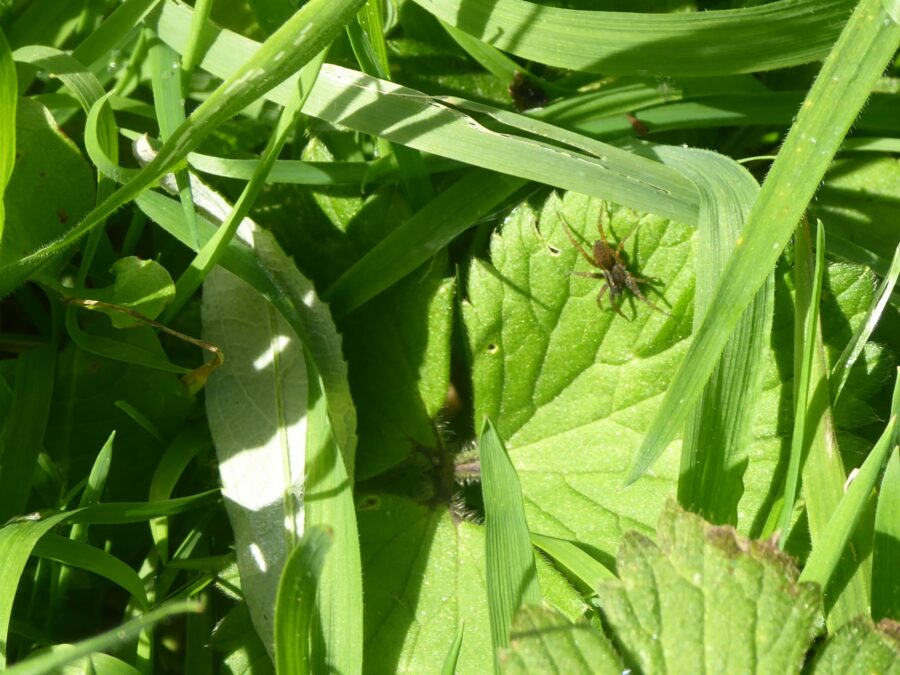
The fly is different to both the burdock gall fly and the frit fly (or grass fly) that I have spotted before. This one is a golden colour with transparent wings patterned with black. It may be a Tephritis bardanae, which is another that makes galls on burdock. Tephritidae flies are fruit flies which have black patterning on their wings. Some of the patterns are very intricate. There is a good collection of wing patterns in these pictures Tephritidae – Fruit flies | NatureSpot. It is possible to identify these fruit flies according to their wing pattern, though there is some variation. The larvae make galls on the burdock leaves, and the pupae hide out the winter in dead flower heads.
